How to build an extension on a budget without compromising quality
If you are wondering how to build an extension on a budget, but are concerned about cutting corners, our guide is here to help. We share the best ways to cut costs and still achieve the results you want
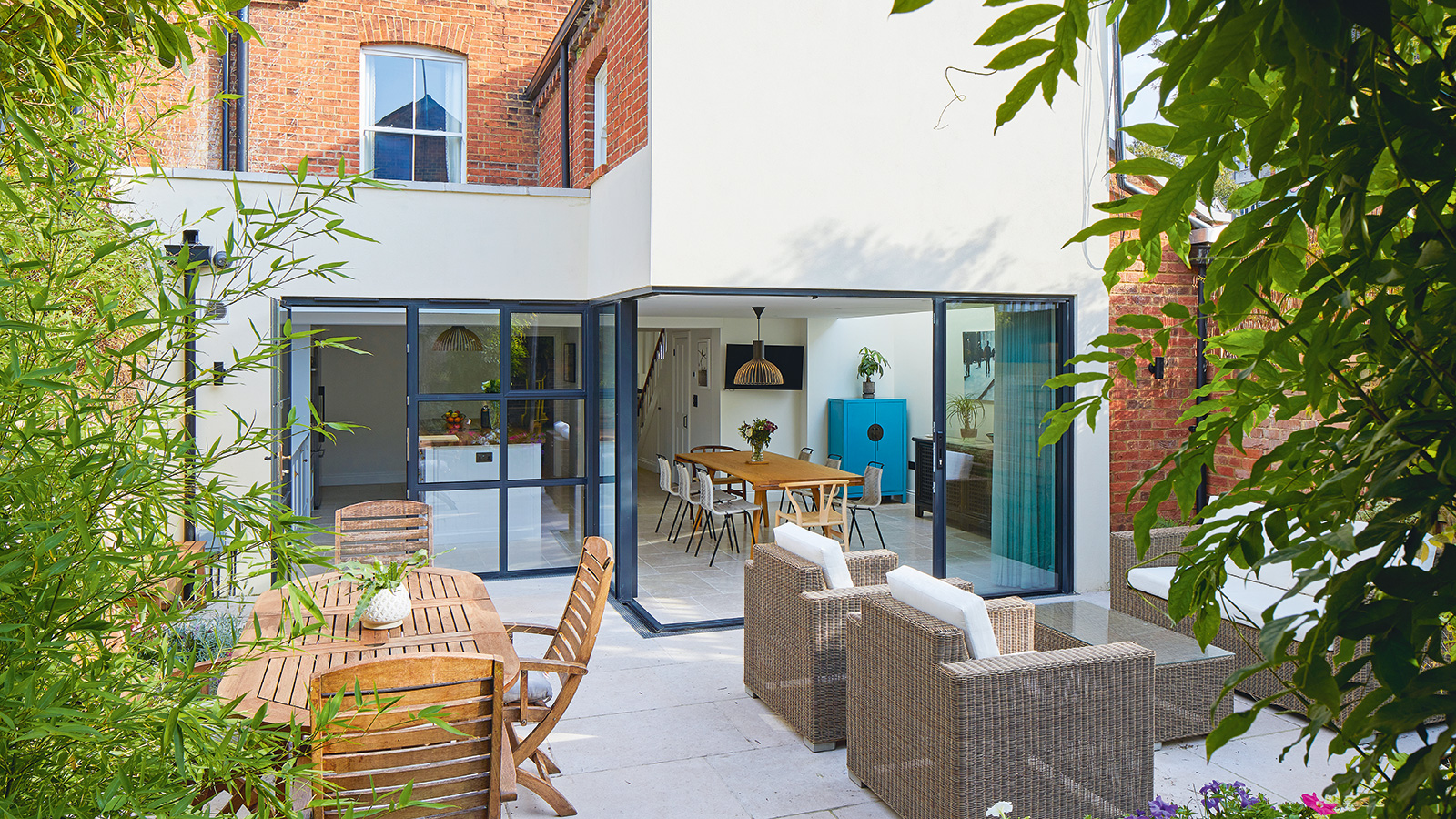
Building a budget extension is quite possible, providing you plan properly and are savvy about where you spend.
If you are planning on building an extension but are keen to keep a lid on costs, fear not. A low build cost need not mean sacrificing quality or style. There are plenty of clever, yet easy, ways to ensure you won’t go off track budget-wise and our guide is here to explain everything you need to know.
From how to choose and shop around for the best building materials for your extension, to advice on the kinds of fees to expect — our guide to adding space to your home without breaking the bank is full of brilliant tips.
1. Size matters when building a budget extension
Before you start planning your extension, work out whether the cost of building it and fitting it out is equal to – or hopefully less than – the amount it might add to your home’s asking price. You can do this by talking to an experienced local estate agent.
As a general rule, the more square footage you add, the more your home’s value should increase (but beware of ceiling prices in your area as they could mean that an extension does not make economical sense). However, the bigger the extension, the more it will cost.
By contrast, smaller extensions, with less square footage might give you extra space, but don’t tend to be very cost-effective.
Getting the balance right by building an extension that’s just a proportionate size, for a price you can afford, is a vital part of the pre-planning.
Bear in mind too that if you are planning a single-storey extension, it may be well worth considering a two storey extension instead to reduce your costs per square metre.
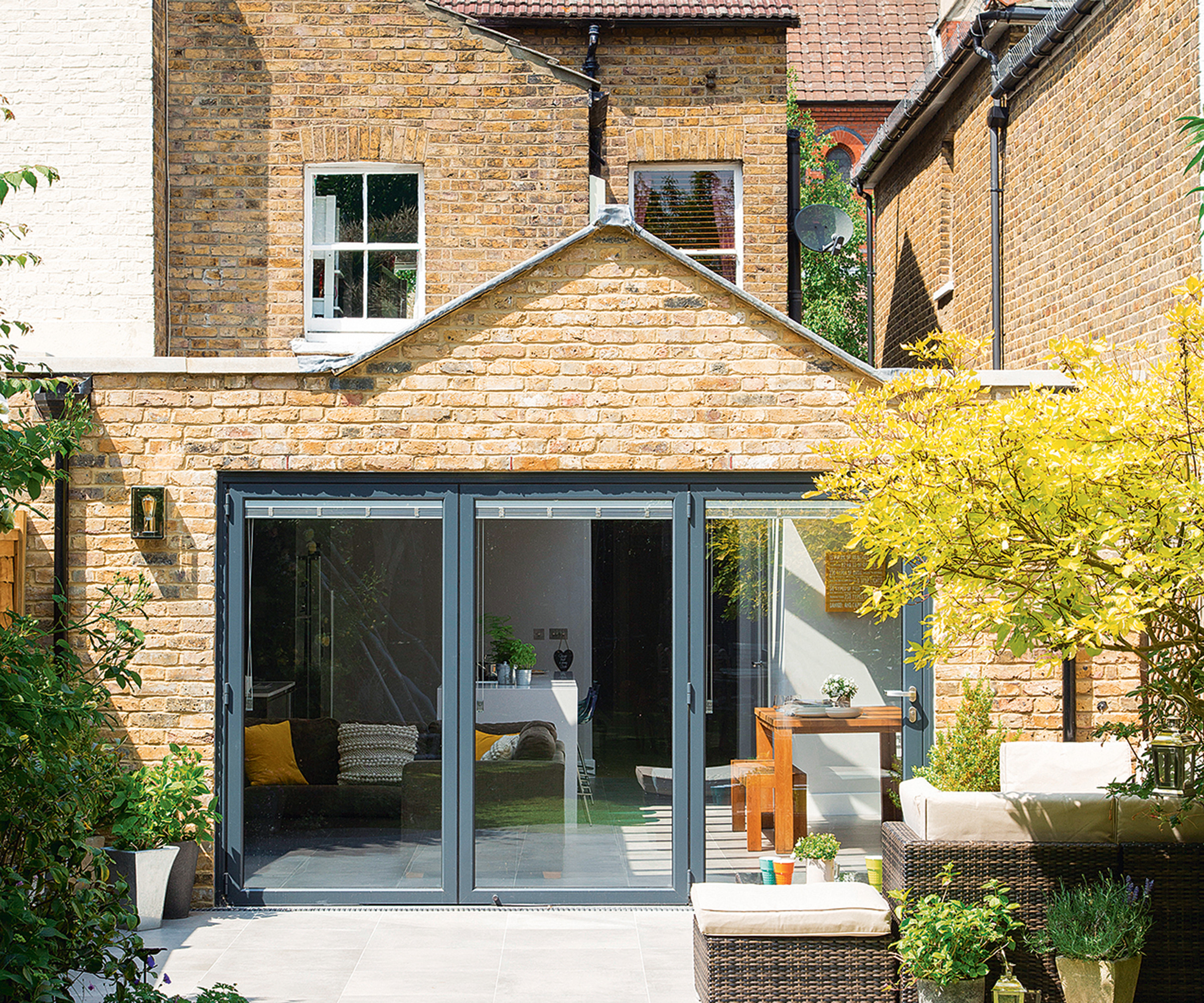
2. Keeping things simple will help you save
When it comes to the design of your extension, simple is best — both in terms of the shape and configuration of your new addition as well as when it comes to selecting building materials.
A rectangle-shaped extension, with a pitched roof, for example, will work out cheaper than a more complicated design.
"Fuss-free and simple is best," agrees former Editor of Homebuilding & Renovating magazine, Jason Orme. "If you build an extension with a complicated design, it will push up both your labour and material costs."
Similarly, the simpler the building materials and interior fittings are, and the easier they are to install, the more affordable the project will be overall. Consider the position of fittings inside the new extension too. If, for example, a new toilet can be sited near an existing soil stack rather than at a distance from it, you’ll save on labour and material costs.
Simplifying the groundworks will help reduce costs, too. This might mean opting to site your extension away from trees, drains, sewers or other buried services — assuming, that is, you have the space to be choosy. Plus remember to factor in the costs of building foundations and getting them right first off.
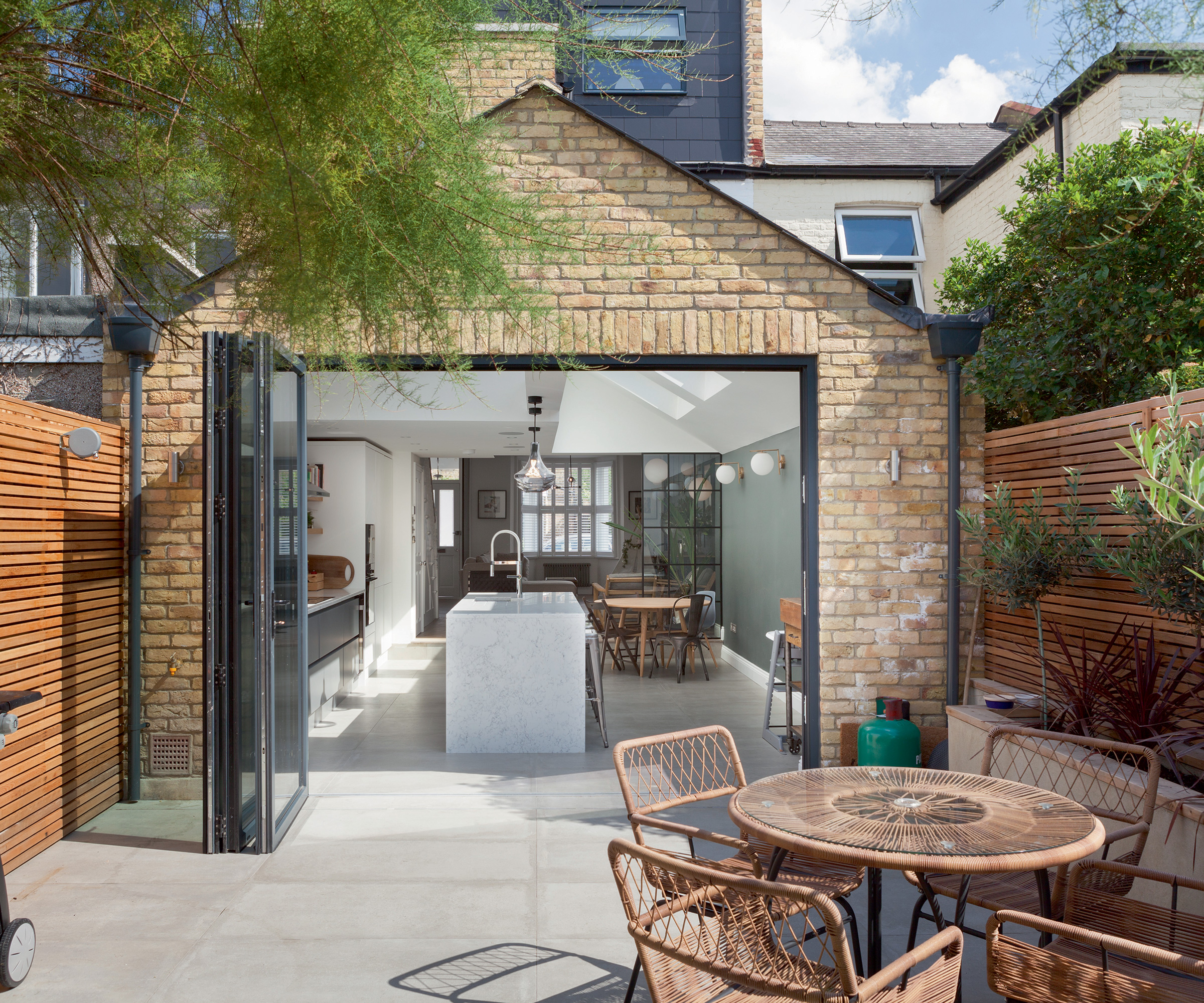

The former Editor of Homebuilding & Renovating magazine, Jason is an experienced self builder and has recently finished renovating his 1960s home. Jason is now Managing Director of Future PLC's Homes' portfolio, which includes UK-leading titles such as Ideal Homes, Livingetc and Homes & Gardens. He is also the author of The Self Build Dream. You can catch Jason in the seminar theatres and Advice Centre at many of the Homebuilding & Renovating Shows across the UK.
3. Avoid custom-made and bespoke items
In order to keep costs down you may need to rule out non-standard, made-to-order items, such as doors and windows. Sticking to standard sizes and off-the-shelf products is generally always the cheapest option. If you can find products and fittings that you can install on a DIY basis too then you will enjoy even greater savings.
4. Don’t be lured by fashionable brands
Remember, more affordable own-brands or DIY-store products can often do the job just as well as premium brands. Dulux paint, for example, will do as good a job, if not better than expensive, trendy paints that cost twice the price, while DIY-store Metro-style tiles are often indistinguishable from those of boutique brands once they’re on the wall.
5. Try to stick within your permitted development
There are various fees associated with building an extension but there are ways to cut back on these.
Planning fees are a cost that you can trim back on. If you or your architectural technician/architect can design an extension that falls within your permitted development rights, you won't need planning permission, thus saving the associated fees.
Equally, if you ensure the design of a larger extension that falls outside permitted development will be acceptable to your local planning department before you apply for permission, you’ll save on the cost of repeated applications.
You can do this simply by picking an extension design that’s sympathetic to others in your local area, or by having an informal chat with your council’s officers to gauge their opinion.
6. Make friends with your neighbours
If your build is on or near the boundary with your neighbours, or if the work necessitates, for example, a steel joist being supported by the party wall, you will need to comply with the Party Wall Act.
If you have a good relationship with your neighbours, and can reassure them about the work you are planning, they may agree to sign a party wall agreement.
Doing so will save on the cost of a party wall settlement, which can cost upwards of £1,000, more if next door wants to hire their own independent surveyors – at your expense – something they’re well within their rights to do.
Start by talking to your neighbours and showing them your extension drawings. Then, you need to notify them in writing eight weeks before you start; if they agree to write back to say they do not object or to fill in a waiver form, you can avoid using a party wall surveyor –—and the cost this incurs.
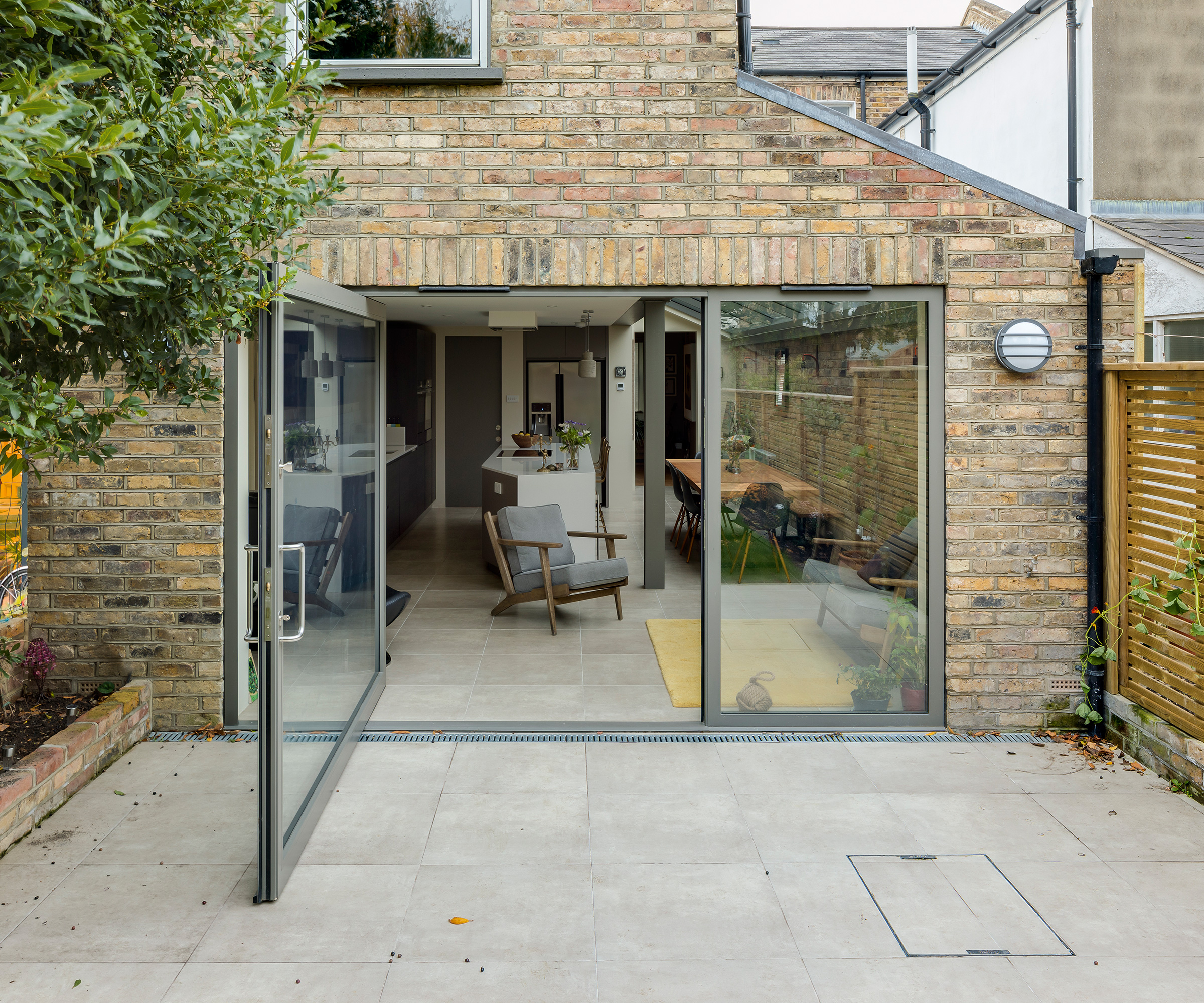
7. Take an alternative approach to getting a design
A common question amongst those looking to add space to their home is 'do I need an architect for my extension?'
While an architect might be the first professional that you think of when it comes to the design of your extension, they are not your only option. This very much depends on the scale and complexity of the extension you want, but there might well be a different route that could save you money.
In terms of architect fees, you are likely to be looking at between 5%-12% of construction costs for plans only and up to 20-25% if they were to project manage the entire extension.
For very very small and simple extensions, your builder may be able to help — or you might like to try to come up with a design yourself. A draughtsperson can be useful in translating your ideas into working drawings you can use for planning permission and building regs purposes.
When scouting around for an architect, architectural technician, surveyor or structural engineer, ask about their track record for designing low-cost projects — then check if they can produce planning and building regulations drawings for a fixed price.
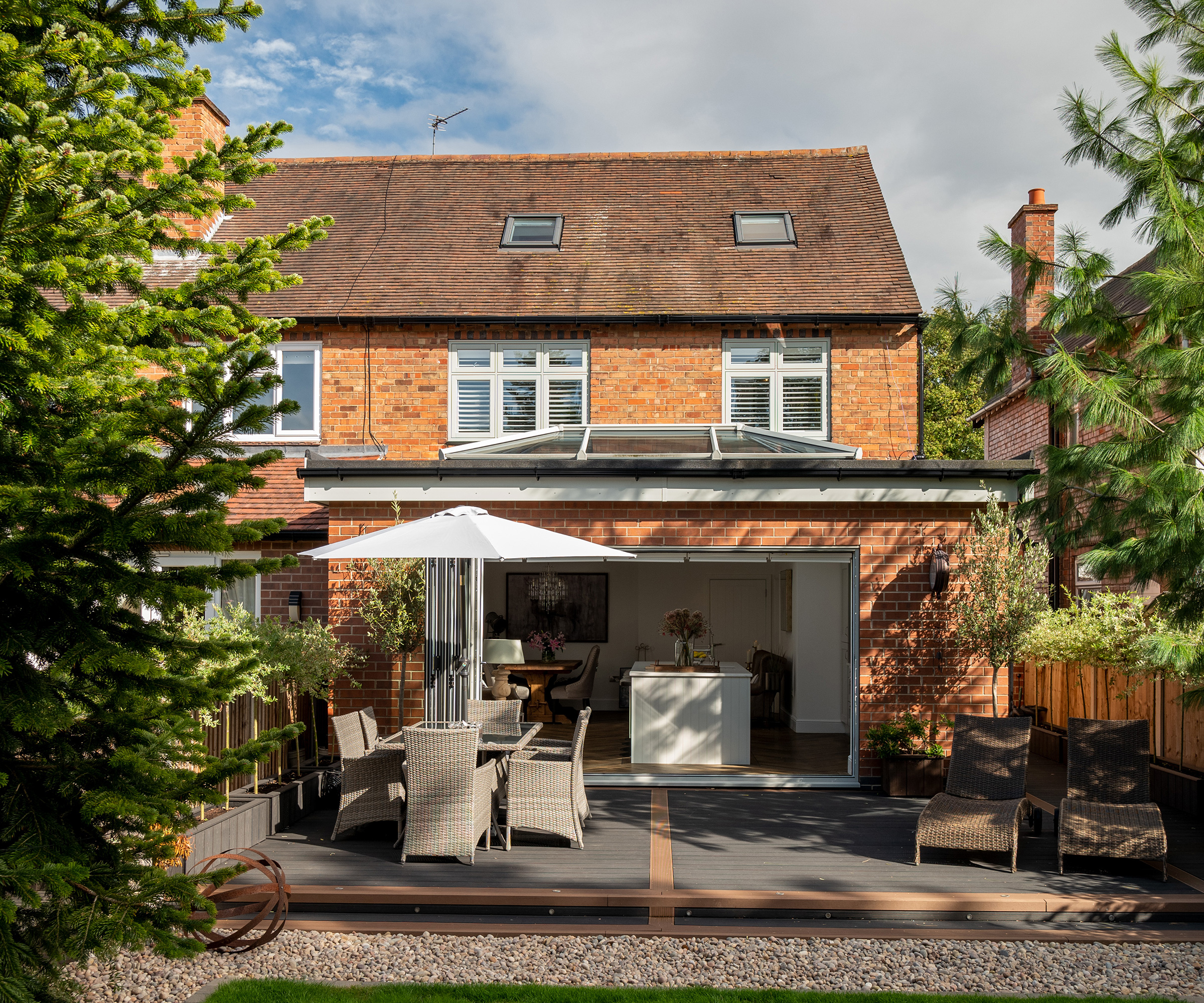
8. Plan well and avoid too many changes
There really are extensions for every budget and carefully planning the design of your new addition, right down to the specification and position of the light sockets, will save you money on making costly changes later on when the build has already started.
Sticking to those design details as closely as possible will keep costs under control, as changes always incur a charge.
If you do have to alter your plans here and there, always agree the fee up front with your builder. Keep an itemised running budget and an order of works as the extension proceeds — this will help you keep track, see where you’ve made savings and where you’ve overspent.
9. Reuse materials where possible
Mistakes cost money — but you can avoid or at least minimise them by having accurate scaled plans in place before work starts. This will mean you don’t over-order materials, and it will prevent work having to be undone and redone. Measuring everything on site, rather than off your plans, can also help reduce wastage.
Reuse whatever items you can. For example, you could consider repurposing your existing kitchen as fittings for a new utility room in a kitchen extension; or, perhaps you can refinish and re-lay old floorboards.
If you can’t re-use existing materials – from door furniture to kitchen units – sell or trade them rather than letting your builders put them in a skip.
10. Skip the skip
How to get rid of rubble and other waste materials can be costly. If you can reduce your use of skips you will really appreciate the savings you can make on hiring them. Remember, as a private householder, you can use your council tip for free.
11. Consider reclaimed and second hand items
There are now so many easy ways to source and find good-quality second hand items that it seems silly not to at least consider this as an option when trying to keep costs low.
From second hand kitchens to ex-display bathrooms, it has never been easier to find designer home fittings at reasonable prices. If you don't mind spending time trawling online auction sites and social media you are also likely to come across some real bargains both in terms of interior fittings as well as building materials.
"Second-hand no longer signifies outdated or nearing the end of its life," says Looeeze Grossman, founder and CEO of The Used Kitchen Company. "Now it represents a budget-friendly opportunity to acquire designer pieces at affordable prices”.
You should also take time out to visit salvage yards. Reclaimed materials, including bricks and roof tiles, doors, flooring, kitchen units and fire surrounds can usually be found in abundance — these individual finds are likely to add bags more character to your new extension too.
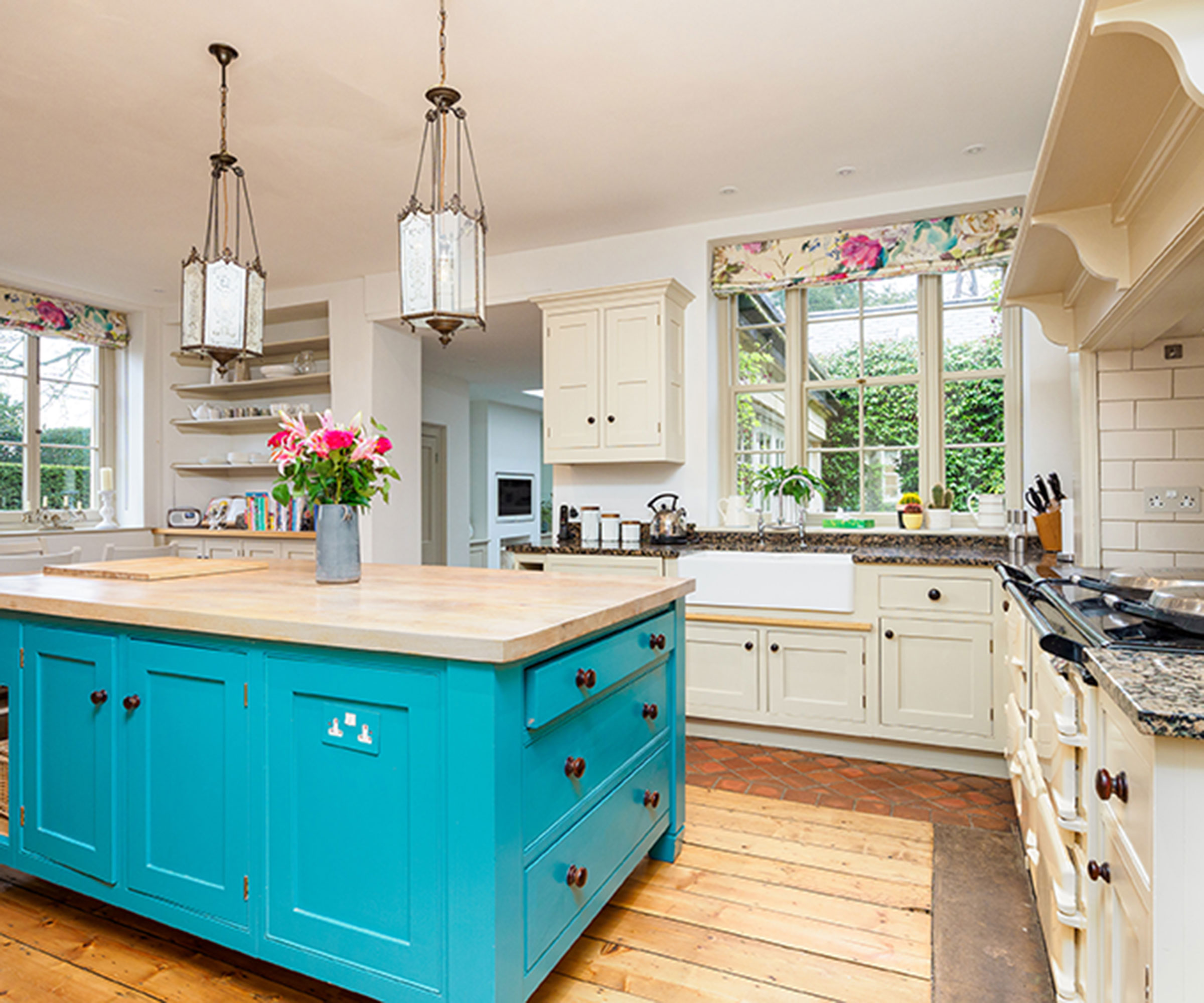

Looeeze is an expert in all things related to second hand and used kitchens. In 2005 she started The Used Kitchen Company, responsible for introducing the concept of recycling kitchens from showrooms and private homes, saving 1000s of tonnes of waste from landfill, promoting sustainability and introducing an ethical choice to the kitchen industry.
12. Be your own project manager
If you have the time – and it does take lots of it – do look in to how to project manage your building project. Managing the building work yourself will save you the fee your builder will charge to cover their time, usually 15-25% of the total cost of labour and materials.
If you are project managing, or buying materials yourself, it’s worth finding out where your local trades shop and try to get those wholesale/trade prices yourself.
Bulk-buying from one supplier is a good opportunity to ask for a further discount, and a reduction on delivery costs, too. Paying in cash for materials, perhaps you’ve found a one-off piece online that you love, allows you to negotiate a discount, too (but make sure you get a receipt).
13. Explore ways to save on VAT
If you take on self-employed tradespeople who turn over less than the VAT threshold, you won’t be charged this tax, making your labour costs lower.
Bear in mind, too, that some renovation works, such as upgrading your home’s insulation or building an extension on a house that’s been empty for two years or more, can be done at a reduced VAT rate.
14. Find the right builder for the job
Choosing the best builder for the job is the one thing that’s going to have the biggest impact on your extension budget so make sure you know how to find a builder that will be right for you.
Ensuring your builder or tradespeople (and therefore, you) do not underestimate the costs your extension is going to incur is vital.
The best way to avoid this is to employ competent, experienced people with good references that you can check thoroughly - remembering to ask questions about how well they stuck to the budget set, and whether cost overruns were down to situations they could have avoided.
Never pay for building work in advance; rather, agree staged payments in advance that are in line with the work completed and the materials used – and only make the payments when you have checked the work and are happy it has been completed as agreed.
This will be easier for you if you are keeping an itemised budget as mentioned above, whether or not you are project managing.

An experienced homes journalist and editor, Lucy has written about renovation, property and gardens since 1990, first working her way around the interiors departments of women's magazines before switching to interiors-only titles in the mid-nineties. She was Associate Editor on Ideal Home, and Launch Editor of 4Homes magazine, before moving into digital in 2007, launching Channel 4's flagship website, Channel4.com/4homes.
In 2018, she became Global Editor in Chief for sister website Realhomes.com, taking the site to a global success. She is now Global Editor in Chief of Homebuilding's sister site Homes & Gardens. She is also a serial renovator and owns rental properties.
The first thing to ask yourself when thinking about a budget extension is if an extension is as cost-effective as repurposing any existing spaces that might currently be underused.
A seldom-used garage, for example, could be cheaper to convert and give you valuable extra living or utility space for a fraction of the cost. Likewise loft conversions can be very cost effective when it comes to expanding your living space.
Get the Homebuilding & Renovating Newsletter
Bring your dream home to life with expert advice, how to guides and design inspiration. Sign up for our newsletter and get two free tickets to a Homebuilding & Renovating Show near you.
An experienced homes journalist and editor, Lucy has written about renovation, property and gardens since 1990, first working her way around the interiors departments of women's magazines before switching to interiors-only titles in the mid-nineties. She was Associate Editor on Ideal Home, and Launch Editor of 4Homes magazine, before moving into digital in 2007, launching Channel 4's flagship website, Channel4.com/4homes.
In 2018, she became Global Editor in Chief for sister website Realhomes.com, taking the site to a global success. She is now Global Editor in Chief of Homebuilding's sister site Homes & Gardens. She is also a serial renovator and owns rental properties.
